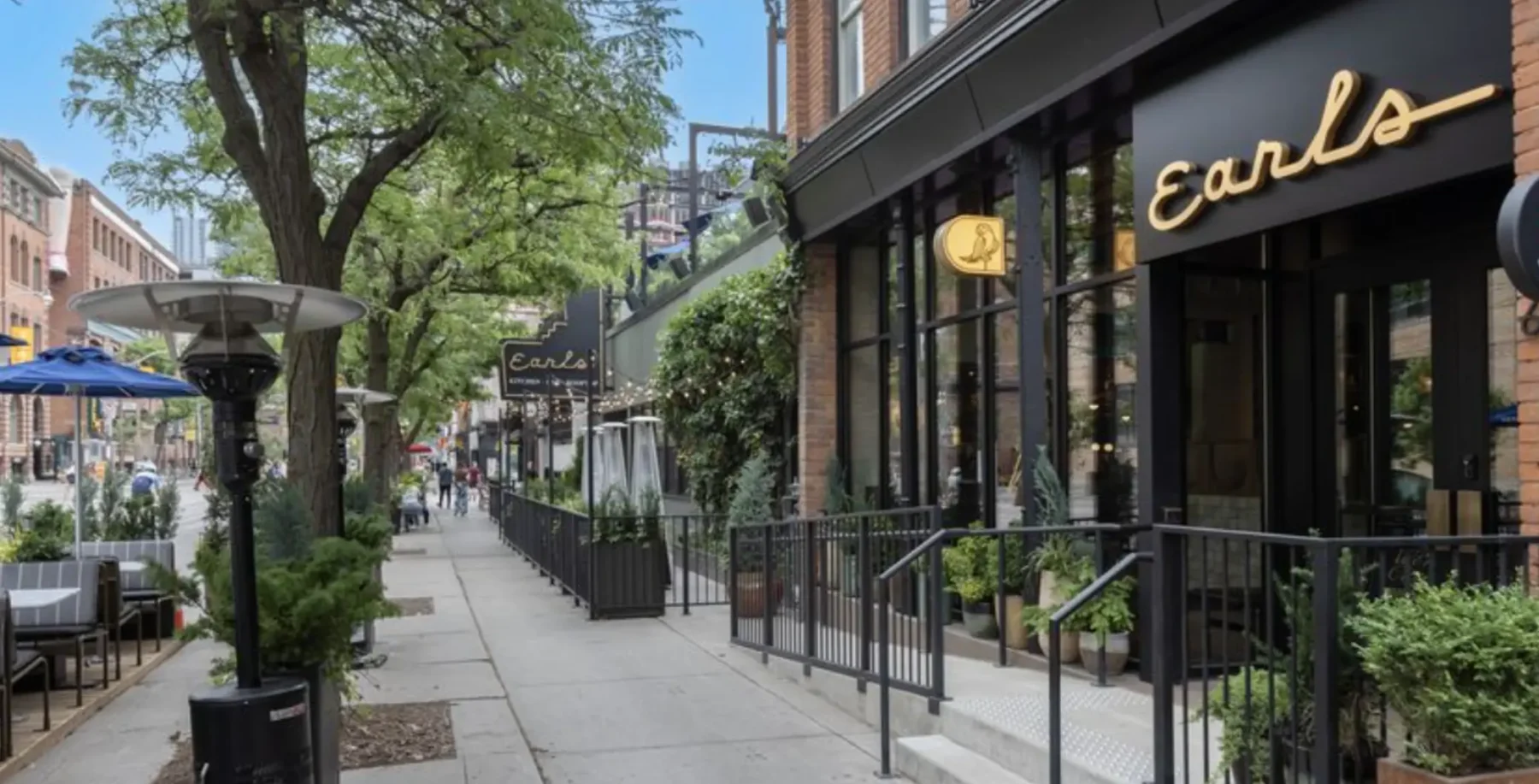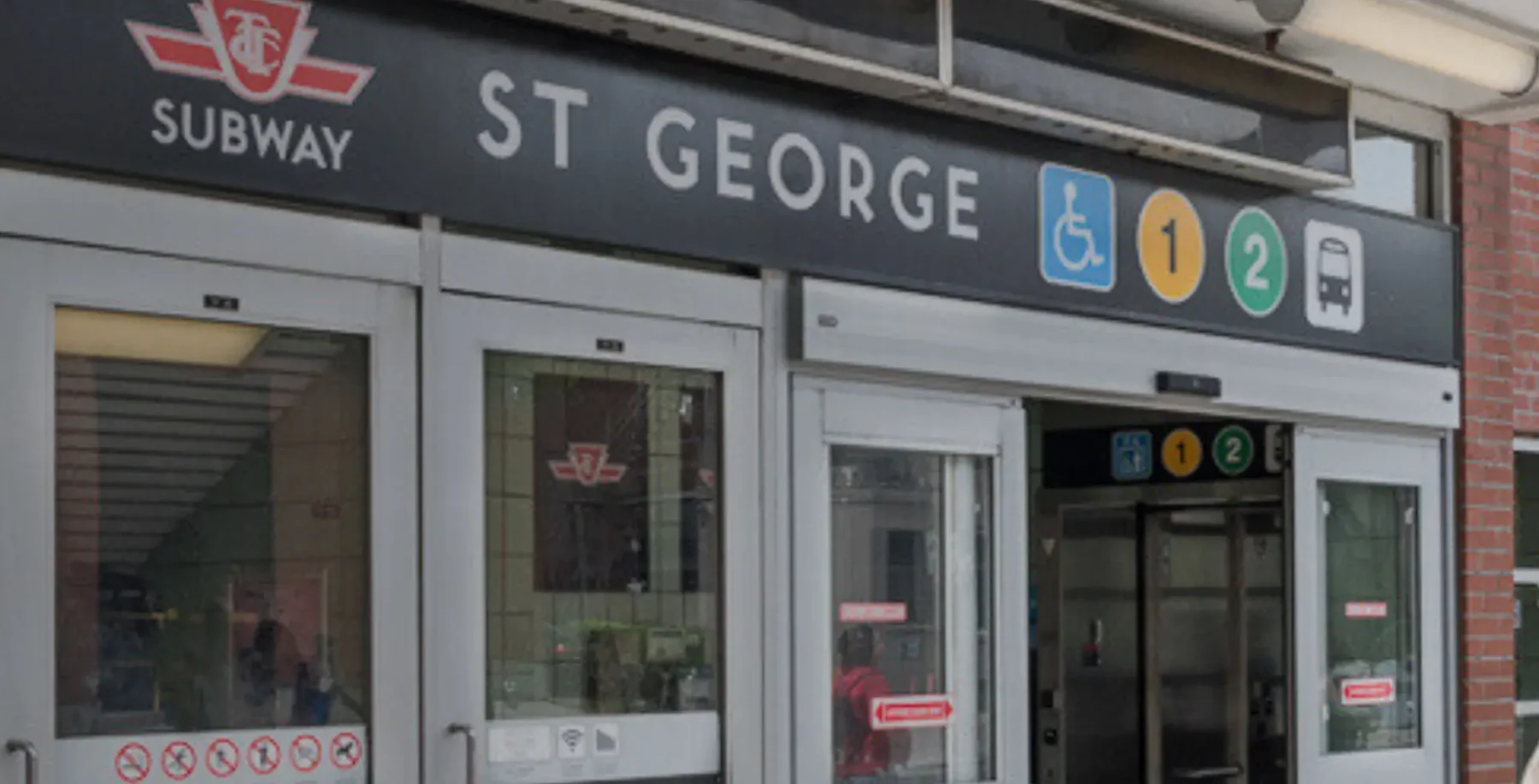
Rating: NNNNN
spadina. there’s no street quitelike it, with its crush of human traffic, its car chaos, its noisy, exciting marketplace allure. It used to be called “the avenue,’ out of respect for its business bustle and the volume of other human affairs that got negotiated there. At the heart of Spadina is its architecture. Tall, early-20th-century buildings jam together to create a dense mix of storefronts and a crowded carnival atmosphere that has captivated successive generations of new arrivals — Jewish and now Asian.
But those red brick structures of an earlier age are now at the centre of a fiery debate. Some say proposed developments would forever alter the avenue’s charm. At issue is a bid by the city to allow intensification (higher density) on the stretch of Spadina between College and Dundas, which could open the way for demolition and redevelopment of many of the century-old buildings.
Those on one side of the fray include long-time property owners eager to profit from the higher property values revitalization would bring. On the other are residents and heritage activists who fear that intensification will trigger blockbusting and the subsequent loss of architecturally significant buildings that collectively form an historical legacy.
In between the two parties is a city council that acted against the advice of its own planning staff.***It’s Friday morning, and I’m in the swanky offices of the Ontario Municipal Board at 655 Bay, where a hearing has been scheduled to decide whether intensification will be allowed. It’s decidedly formal and heavy on legal details — hardly an appropriate forum for public debate. Yet council has deemed this hearing the de facto forum for community consultation on the issue.The appellants in the case are asking the OMB to approve a zoning bylaw amendment that would increase density on Spadina between College and Dundas from 2.5 times maximum coverage to 3.5 times (allowing the developer to build a structure up to 3.5 times the floor area of the existing lot). The appellants are Tonny Louie, a real estate broker whose family owns Grossman’s Tavern, the Lung Kong Kung Shaw Brotherhood, which owns the former Yiddish Standard Theatre at the corner of Dundas and Spadina, and Hang Hing Investments.
Today the board is listening to local resident Paul Oberst make his case against intensification. Oberst, an architect who lives in Kensington Market, tells me he had only three weeks and a $200 budget to throw together a list of witnesses to testify, without the benefit of legal counsel.
In his scruffy jacket and sneakers, he’s clearly out of place in this suit-and-tie setting, and his questions need constant clarification from the OMB adjudicator. “My father was right. I should’ve been a lawyer,” he jokes.
He summons Marcia Cuthbert, a member of the Local Architectural Conservation Advisory Committee (LACAC). She says the narrow, 25-foot-wide buildings along Spadina are unique because they form an unbroken line of facades dating back to the 1880s. “I don’t think there’s a group of buildings as extensive as this group in the city,” she notes.
She’s followed by Susanne Pringle, the city’s former senior planner, who oversaw an extensive six-year study of the area before recommending that the existing zoning (low-density commercial-residential) be kept as is.
“Once you tear down old buildings and put in new ones, it’s going to change the whole character of the street,” she says. She argues that, given the 18-metre height restriction, allowing 3.5 times coverage would give developers no choice but to buy up more than one property in order to redevelop. “You cannot achieve 3.5 times density without land assembly. Even if you add another floor, you still won’t reach 3.5, given that the average density on Spadina is currently 1.72 times.’
Pringle fears that land assembly resulting from intensification would threaten the survival of the narrow storefronts that give the street its unique character. She says it would also have a negative impact on residences in Kensington Market. As an example, she points to 436 Spadina, a redeveloped condo on the corner of Oxford. An adjacent property at 8 Oxford had to be torn down in order to accommodate it, and even then, she says, the redeveloped building achieved only 3.1 times density.
Why were Pringle’s study and report rejected by city council? Cathy Nasmith, chair of the city’s Preservation Board, says one reason was that councillors Olivia Chow and Jack Layton, who live within 300 metres of Spadina, declared a conflict of interest in the matter, which, under council protocol, effectively shut them out of the process.
Chow’s downtown colleague Kyle Rae ended up handling the matter. Rae says Spadina sorely needs reinvestment. “Given what’s happened with the introduction of the streetcar line, it’s ripe for development,” he says. “When you have transit intensification, you should have residential intensification.’
When I ask him why council voted against the advice of its own staff, he says the developers originally wanted density raised to five times coverage. The city was given two choices: oppose the developers’ plan and fight their appeal at the OMB or settle for a modestcompromise at 3.5. “Why go through an OMB hearing and fight over a 0.5 difference, if the Official Plan calls for 3.0?”
Cuthbert worries about the implications of these seemingly small differences. She says LACAC has forwarded a report to the Preservation Board recommending that 81 properties be listed on the city’s inventory of heritage buildings. These include legendary blues bar Grossman’s, the former Standard Theatre (now occupied by a Royal Bank) and 346 Spadina, where Emma Goldman’s remains once rested. Once they’re listed, the city would be in a position to give them a heritage designation if the need arises. It’s a form of protection that allows the city to obtain delays of at least 180 days when developers seek demolition.
The heritage arguments for keeping the status quo get Louie riled up. A self-defined crusader for local Chinese businesses, he sees heritage as a secondary concern compared to the street’s long-term economic viability. “I’m not saying (heritage) is not important. But 2.5 times on a street as wide as this one is inconceivable and inappropriate. There is no incentive to improve or redevelop the properties whatsoever,” he says.
Louie faults heritage preservationists for trying to erect barriers against the economic aspirations of local businesses. “All they’re doing is spreading fear. It’s like strangling a baby. I don’t believe for a minute that the old Jewish and Chinese people who have invested all their lives in this street have to be shackled by what these people mean by heritage. There’s simply no money coming into the area.”
As to fears that rents would go up, Louie says, “Even if they do, what’s wrong with that? The world has always been about survival of the fittest. If the street doesn’t carry a meat market or grocery store, then whatever comes in will take its place. You will get more business and more people.”
He’s backed by property owner and realtor Harold Klug, whose family has owned 315-325 Spadina since the 1950s. “The zoning bylaw of 2.5 times has been in place for 20 years. Do you see any restoration of any of these buildings? No. They’re in a deteriorated state.” Klug says redevelopment would give Spadina a chance to return to its former glory, adding that the right balance has to be found between historical preservation and development.
Other proponents of intensification are less sympathetic to heritage preservation. Van-Hao Huan, the owner of New Asia Supermarket, which has been in business since 1985, thinks Toronto has enough preserved historical buildings. He says the current zoning restriction has forced an exodus of potential investors to the suburbs in recent years and that intensification would benefit struggling businesses. “The situation would be more serious if it weren’t for the new immigrants coming here.”
Joseph Heller, whose 70-year-old printing press at 369 Spadina might well be the oldest surviving business on the strip, scoffs when asked whether some of the old buildings should be saved. “That’s nonsense. The stores here are all suffering. You can’t make a living on this stuff. If I didn’t own this building, I’d (have been) out long ago.”
However, heritage activists argue that historic preservation of the buildings is not incompatible with economic vitality. In fact, they say, the two can work quite well together. Just not at 3.5 times density.
At the hearing, Oberst summons 401 Richmond owner Margaret Zeidler to testify. She says her experience has shown that it is possible to acquire old buildings, refurbish them and attract vibrant commercial businesses.
She points to 993 Queen Street East, a three-storey brick building owned by Carl Strygg, as a model of what might be possible on Spadina. When I talk to Strygg over the phone, he says the building that dates back to 1894 was near derelict when he bought it seven years ago for $260,000. Since refurbishing it and opening a restaurant on the ground floor, he says its value has more than doubled to $550,000. “My philosophy from day one has been to retain everything that is salvageable and restore it in a manner that fits in the context of the building and surrounding neighbourhood.”
Strygg says it’s cheaper to retain and refurbish existing structures than to demolish and rebuild. “The cost per square foot on that building was less than $50. You cannot build a new building today at that cost.” Asked whether he has his eye on any of the buildings on Spadina, he replies, “If I had the money, I absolutely would. I find it a joyful and rewarding experience to watch people walking by my building, knowing that if anyone else had bought it it probably would have been demolished.”
But Louie says that example can’t be applied to Spadina, because of the vast difference in land values. “A little store north of Baldwin costs $500,000. Closer to Dundas, we’re talking $1.5 million for a 17-foot-wide building. What can you do with that? What kind of tenants must you attract in order to pay that kind of rent?”
When I ask Louie whether he would tear down Grossman’s to redevelop, he replies diplomatically, “It was never in my mind to develop my own property. I’m doing this for the whole street.” When I press him, he says he would consider it if there was enough market pressure.
The question is whether the proposed 3.5 times intensification would automatically result in the loss of old buildings. Councillor Kyle Rae, who sits on the Preservation Board, doesn’t seem to think so. “There are heritage buildings the board should look at listing and protecting. In the majority of cases, when we’ve listed and designated a building, the property owner works with us.”
He says there is potential for the kind of revitalization of historic buildings on Spadina that occurred on King West. “We’re giving the landowners an opportunity to look at redevelopment. We will work with them to preserve the heritage buildings and redevelop the street.”
Retail tenants, however, have different concerns. Max, who runs Fortune Housewares Importing Company, a family-run business that has been on Spadina for 40 years, tells me he’s worried about the possibility of rents rising with redevelopment. “This will be even more of a ghost town,’ he says.
Former city councillor Richard Gilbert, a long-time proponent of main street intensification says that despite the problems, “What city council has done is appropriate. The larger picture impels development, makes better use of transit and prevents sprawl.” However, he adds, “What I am concerned about is creating a street that’s pleasing to walk on and makes one feel good about being in the city. City council should attempt to create a facade that is historically worthy of one of the city’s finest streets.”












